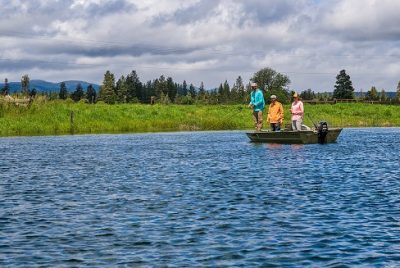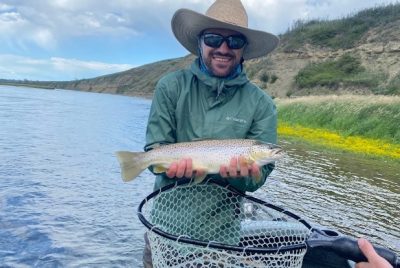Beginner Fly Fishing Setup
Introduction
Hey there, aspiring fly fishers! Have you ever watched someone gracefully cast a line, the fly landing perfectly on the water’s surface, and thought, “I want to do that”? Well, you’re in the right place. Fly fishing is not only a fantastic way to connect with nature but also an incredibly rewarding hobby. Let’s dive into everything you need to get started with a beginner fly fishing setup.
Why Choose Fly Fishing?
Benefits and Appeal

Fly fishing is more than just catching fish; it’s an art form and a way to immerse yourself in nature. The rhythmic casting, the challenge of enticing a fish with a hand-tied fly, and the tranquility of standing in a stream are experiences that set fly fishing apart from other types of fishing. Plus, it’s a great way to get some exercise and clear your mind.
Essential Gear for Beginners
Choosing the Right Fly Rod
Rod Length and Weight
Your fly rod is the most critical piece of your setup. For beginners, a 9-foot rod with a 5-weight line is a versatile choice that handles various fishing situations, from small streams to larger rivers.
Material and Action
Most beginner rods are made from graphite, offering a good balance of strength and flexibility. Rod action (how much the rod bends) varies from slow to fast. Medium action rods are generally best for beginners because they provide a balance of power and control.
Selecting a Fly Reel
Balance and Drag System
A reel should balance well with your rod, not making it too top-heavy or bottom-heavy. The drag system is also crucial, as it helps control the line when a fish is on. Look for a reel with a smooth, adjustable drag system.
Reel Material
Reels come in different materials, with aluminum being a popular choice due to its durability and lightweight. Ensure the reel can handle the weight of your fly line and backing.
Understanding Fly Lines
Weight and Taper

Fly lines come in various weights, which should match your rod. A weight-forward taper line is excellent for beginners as it’s easier to cast and control.
Backing and Leader
Backing is a thin, strong line attached to the reel before the fly line, providing extra length when a fish runs. The leader is a clear line attached to the fly line, tapering down to a thin tip where the fly is tied. A 9-foot leader is a good starting point.
Types of Flies for Beginners
Dry Flies
Dry flies float on the water’s surface, mimicking insects that fish feed on. They are great for visual fishing and exciting takes.
Wet Flies
Wet flies sink below the surface and imitate drowned insects or small fish. They are effective in various fishing conditions.
Nymphs and Streamers
Nymphs mimic underwater larvae and are often the most productive flies, as many fish feed underwater. Streamers imitate small fish and are used to target larger predators.
Must-Have Accessories
Waders and Boots
Waders keep you dry while fishing in rivers and streams. Choose breathable waders for comfort and wading boots with good traction.
Vest or Pack
A fly fishing vest or pack helps you carry all your gear efficiently. Look for one with plenty of pockets and easy access to your tools and flies.
Tools and Gadgets

Essential tools include nippers for cutting line, forceps for removing hooks, and a fly box to organize your flies. A landing net and polarized sunglasses are also handy.
Setting Up Your Fly Fishing Gear
Assembling the Rod and Reel
Start by attaching the reel to the rod. Ensure the reel seat is snug and secure. Thread the fly line through the rod guides, starting from the bottom.
Attaching the Fly Line
Tie the backing to the reel using an arbor knot, then attach the fly line to the backing with an Albright knot. Finally, connect the leader to the fly line using a loop-to-loop connection.
Choosing and Tying Flies
Select a fly based on the water conditions and the fish you’re targeting. Use a simple knot, like the improved clinch knot, to tie the fly to the leader.
Fly Fishing Techniques for Beginners
Basic Casting Techniques
Overhead Cast
The overhead cast is the most common technique. It involves smoothly accelerating the rod backward, stopping, and then accelerating forward to cast the line.
Roll Cast
The roll cast is useful when you have limited space behind you. Instead of lifting the line into the air, you roll it forward along the water’s surface.
Reading the Water

Understanding where fish are likely to be is key. Look for areas with current breaks, such as behind rocks or near vegetation, where fish often wait for food.
Playing and Landing Fish
Once you hook a fish, keep the line tight and use the rod to control the fish. Let the reel’s drag system tire the fish out, then use a landing net to secure it.
Fly Fishing Etiquette and Conservation
Respecting Nature and Other Anglers
Always practice Leave No Trace principles. Respect other anglers by giving them space and not crowding their fishing spots.
Catch and Release Practices
If practicing catch and release, handle fish with wet hands, minimize their time out of the water, and use barbless hooks to reduce harm.
Common Mistakes and How to Avoid Them
Casting Errors
Common casting errors include starting the forward cast too soon and not stopping the rod abruptly enough. Practice smooth, deliberate motions to improve.
Overloading with Gear
Beginners often bring too much gear. Keep it simple with just the essentials to avoid feeling overwhelmed and cluttered.
Ignoring Local Regulations
Always check and follow local fishing regulations, such as size limits, catch limits, and permitted fishing methods.
Conclusion

Embarking on your fly fishing journey is an exciting adventure. With the right gear, basic techniques, and a respect for nature, you’ll be well on your way to enjoying this rewarding sport. So grab your gear, head to your nearest stream, and start casting!
FAQs
1. What is the best fly rod weight for beginners?
A 5-weight rod is versatile and great for beginners, suitable for various fishing conditions.
2. How do I choose the right flies?
Start with a selection of dry flies, wet flies, nymphs, and streamers. Match your fly choice to the local insect activity and fish preferences.
3. Do I need waders for fly fishing?
Waders are essential for fishing in rivers and streams, keeping you dry and comfortable.
4. How often should I replace my fly line?
Replace your fly line every 1-2 years, depending on usage and condition. Regularly clean and inspect it for damage.
5. Can I practice fly fishing without water?
Yes, you can practice casting on grass or in your backyard. It helps you develop your casting technique and improve accuracy.




